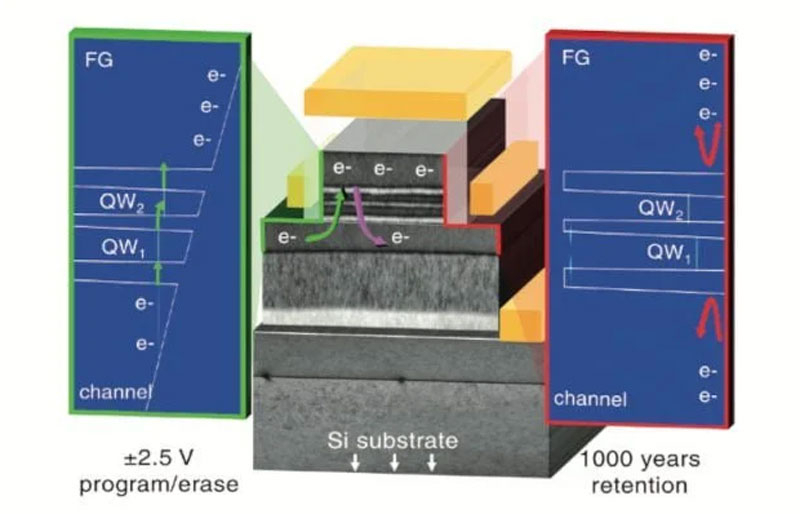The British company QuInAs announced that it has received funds to prepare for the production of a new type of non-volatile memory, UltraRAM. Money in the amount of £1.1 million ($1.42 million) for a period of one year was provided by the country’s state investment fund. These funds will be the first serious contribution to preparing for the production of new memory on large-diameter wafers. The British company will be one step closer to revolutionizing the world of data storage and processing.

Structure of an UltraRAM memory cell. Image source: QuInAs
UltraRAM memory burst into the non-volatile storage space about five years ago. Like all other types of innovative “flash memory” – ReRAM, SST-MRAM, 3D XPoint and others – it promises speed at the level of DRAM RAM and unprecedented write resistance against the backdrop of the ability to store information in cells for hundreds of years without power supply. For the UK, the creation of such memory means joining the club of advanced developers of semiconductor solutions, which have no analogues.
The main scientific work on the design of UltraRAM was carried out by researchers from the British universities of Lancaster and Warwick. Lancaster University physics professor Manus Hayne is called the father of memory. In the winter of 2023, Hein created QuInAs to commercialize UltraRAM. The company name reflects the terms “quantum” and “indium arsenide.” UltraRAM memory works on the effect of quantum tunneling of electrons through an energy barrier into the cell. The barrier is created by alternating thin-film layers of gallium antimonide (GaSb) and aluminum antimonide (AlSb).
According to the developers, UltraRAM will consume 100 times less energy per switch area than DRAM, 1000 times less than NAND flash and 10,000 times less than “other types of innovative memory.” At the same time, an UltraRAM cell can be rewritten at least 10 million times, and can also retain information for 1000 years.
The inventors created prototypes of UltraRAM cells at university production. It is limited to plates with a diameter of 75 mm. Also, the university complex does not have advanced installations for growing layers (crystals) on wafers. Therefore, the technology must be adapted to be reproduced in a factory environment. To achieve this, the British semiconductor manufacturer IQE will receive the majority of the funds allocated to QuInAs for this year. With this money, it will be able to prepare for the production of thin-film GaSb and AlSb coatings on 150 mm wafers.
Initially, QuInAs will create seeds for the growth of crystal layers at university facilities. In the future, IQE should find the ability to grow layers on its own equipment. At the same time, QuInAs will improve UltraRAM memory and work on scaling it towards reducing the cell area, as well as work on transferring memory production to 200 mm wafers. From the outside, the volume of work seems enormous and will take more than one five-year period. But the path of UltraRAM began just five years ago with an ordinary scientific article in Nature, and it has already stepped into the production sphere.